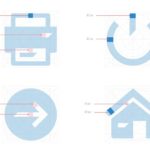UX and banking: designing for the future
The financial sector has undergone tremendous change in the past few years thanks to the adoption of emerging technologies such as the smartphone.

Now it is on an even bigger precipice of change as advanced technologies such as artificial intelligence move from science fiction to a reality. Banks now know more about their customers behaviors, needs, and what motivates them than ever before.
What does it mean to have all of that data? How can banks use it to empower their users beyond just selling them more products?
These were some of the questions posed at the Finovate Fall conference in New York City this week, which included BBVA´s Spring Studio co-founder Sanjay Shamdasani. Spring Studio were acquired by BBVA in 2015 to accelerate the Group's efforts to become the leading digital bank through great design and user experience.
Shamdasani spoke on a panel focused on the topic of empowering end users with 21st Century Design.
The first question he had to answer was what exactly did empowering end users mean.
Shamdasani explained: “In short, it means empowering the customer or client to do more with less effort and by doing so, to give them more time to do other things.
“For us, we believe that artificial intelligence and machine learning are the key drivers to achieve this. With AI, we can augment experiences, so there is less cognitive load for the user, and in turn our experiences become smarter and more targeted. We can also offer personalized choices to customers we may never have considered before because of what’s possible with the sheer data and computing power we have.”
The second element though is about changing the relationship so that banks begin to anticipate their customer's needs more and design products that deliver this intuition.
The Tesla Case
For example, Shamdasani used the example of Tesla and how it has changed the relationship between their drivers and their cars. He said: “It knows when we approach the car, we’re going to need to open the doors, so it does it for us in anticipation of our arrival. It knows my preferences vs. my wife when I sit down, so it adjust the seating accordingly. It indicates cars in my blind spot in the dash in front of me to help me avoid obstacles I might not see. It is also constantly learning and updating my driving experience via real-time updates. The end outcome likely being a fully automated driving experience, that is not only tailored to you but safer and allows you to do more.”
Applying this thinking to banking, he said you can imagine financial strategies being shaped in the same way and customers having a self-driving bank account that anticipates needs, provides targeted recommendations for new products and services, constantly learning and improving financial planning, and eventually managing customer´s money for them.
But, as BBVA CEO Carlos Torres Vila told the ESADE Business School in Barcelona this week, the key to this happening, to banks becoming a more integrated part of people's lives is trust.
“Data is the key in this transformation.” Carlos Torres Vila believes it is essential to build a circle of trust with the customer.
He said: “We can come up with actionable recommendations by applying artificial intelligence to data, which creates an added value that will enhance our customers’ trust, completing the circle.”
So what might this mean for the future and the design of banking products and services?
For Shamdasani it's about trying to connect the convergent technology and wider forces that shape people's lives. He explained: “In order to prepare for how fast technology’s evolving, we’ll need to work closely with data scientists, business strategists, designers, and technologists - looking at the signals and forces out there today for what might impact our future, such as connected devices, distribution of trust away from traditional players to new ones, environmental changes, as well as social changes - like moving towards valuing experience over products.
“We use those signals to craft possible and probable future scenarios, discuss implications and envision what a preferable future for our customers could be. We then look at what we can design today to lead us towards that future. In this manner we can shape the future we want and set ourselves up to be resilient across a multitude of other possibilities.”
What is clear though is that with more and more people using devices like smartphones for everything from chatting to shopping and banking to photography, the user experience that the sector delivers needs to meet the customer expectations around accessibility, functionality and usability, while all the time doing more for them with less time needed.
It´s a challenge, but also a great opportunity to be a better partner in their lives.